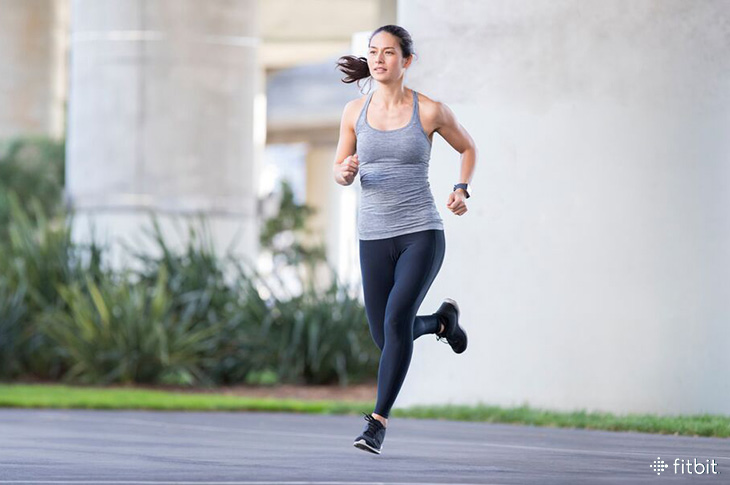
When it comes to fine tuning walking and running mechanics, people often spend so much time focusing on their legs that they neglect their feet. But that’s a mistake. Feet are the interface between you and the ground and learning how to increase the number of times they both make contact—a concept known as turnover—can have a big effect on your stride.
“Developing quick feet is how we train our nervous system to better control the muscles involved in both walking and running,” writes running coach Pete Magill, in his newly released book, Speed Runner. The result? Faster, easier, and more comfortable walking and running.
Walkers and runners tend to think that a fast turnover stems from how quickly you can move your feet in the air and get them back on the ground. But research shows the opposite: Everyone takes about the same amount of time getting their legs repositioned in the air; what makes the difference between a slow jog and a record-breaking sprint is how long your feet stay on the ground. “Having quick feet is about how quickly, forcibly, and efficiently you apply force to the ground to move forward,” says Magill.
Spending less time on the ground requires generating force, fast. And according to Magill, there are three elements that contribute to quick feet: muscle power (especially leg and core), reduced muscle inhibition, and elastic recoil. Muscle power creates the force that propels you forward. Reduced inhibition improves coordination between opposing muscle groups to allow for smoother, faster motion. And, as Magill states, elastic recoil is the ability for your tendons and other connective tissue to store energy when they stretch and then release it when they shorten—providing a free push.
So how do you develop these speed boosters? Magill suggests three drills, one to target each element. Depending on your training and experience level, incorporate them into your routine one to three times a week.
3 Drills That Help Develop Quick Feet
1) Quick Hops
Improves: Muscle power
Quick hops train your body to combine powerful, lightening-fast muscle contractions with the spring-like quality of your tendons (“elastic recoil”) so that you get back into the air as quickly as possible after each hop. This reduces the length of time your foot is on the ground during walking and running, which leads to more strides per minute and a faster, more efficient pace. Focus on your form. “If you start losing form, it’s time to jog back to the start line,” says Magill.
Directions:
1. Stand with feet shoulder-width apart.
2. Imagine that you’re standing on one side of an invisible line. Spring forward with both feet parallel to that line, focusing on horizontal—not vertical—motion. As soon as you land, jump again, keeping a quick rhythm.
3. After hopping forward 20 to 30 yards, jog back to the start and immediately perform a 20- to 30-yard sprint at 90 percent effort. (This helps to integrate the drill into your stride.)
4. Walk back to the start. Repeat twice more.
2) Flat-Footed Marching
Improves: Muscle Inhibition
This drill reduces the opposition between the muscles of your upper leg. It allows for a higher knee lift and a smoother drop of your leg back to the ground, which enables you to apply more force more quickly. Your hamstrings learn to turn off while the quads and hip flexors are lifting your knee, and your quads learn to turn off while your hamstrings and glutes are drawing your leg back down to the ground.
Directions:
1. Stand with feet hip-width apart.
2. Keeping your feet flat (so you don’t bring your calves into play) march forward quickly (but not at break-neck speed), lifting your knees to waist-height or higher and driving your feet downward in a piston-like motion. Avoid stomping the ground.
3. After marching forward 20 to 60 yards, turn and jog back to the start.
4. Immediately sprint at 90 percent effort to the finish.
5. Walk back to the start. Repeat twice more.
3) Ankle Poppers
Improves: Elastic recoil
“Running without stiff ankles is like driving a car with flat tires,” says J.B. Morin, Ph.D., a professor of sports science at the University of Nice Sophia Antipolis in France who studies human locomotion and performance. Ankle poppers will help increase stiffness in your tendons, allowing your body to react and bounce back quickly, rather than squishing and rolling around with each stride.
Directions:
1. Balance on your left leg with your left knee slightly bent and your right leg lifted in front of you, with your right knee bent at roughly a 90-degree angle.
2. Keeping your arms at your sides, hop up and down quickly for 15 seconds on your left leg focusing on speed versus height.
3. Switch feet, and repeat 2 to 3 times per leg.
This information is for educational purposes only and is not intended as a substitute for medical diagnosis or treatment. You should not use this information to diagnose or treat a health problem or condition. Always check with your doctor before changing your diet, altering your sleep habits, taking supplements, or starting a new fitness routine.

My goal is to stay in good health, and every day, I wake up and pray that I do. Being in control of your life and having realistic expectations about your day-to-day challenges are the keys to stress management, which is perhaps the most important ingredient to living a happy, healthy and rewarding life. Together with open conversations and greater understanding, we can ensure that attitudes for mental health change and children receive the support they deserve. I need some informative information about how to solve women waistline problem. Have you any information to solve my all problem?